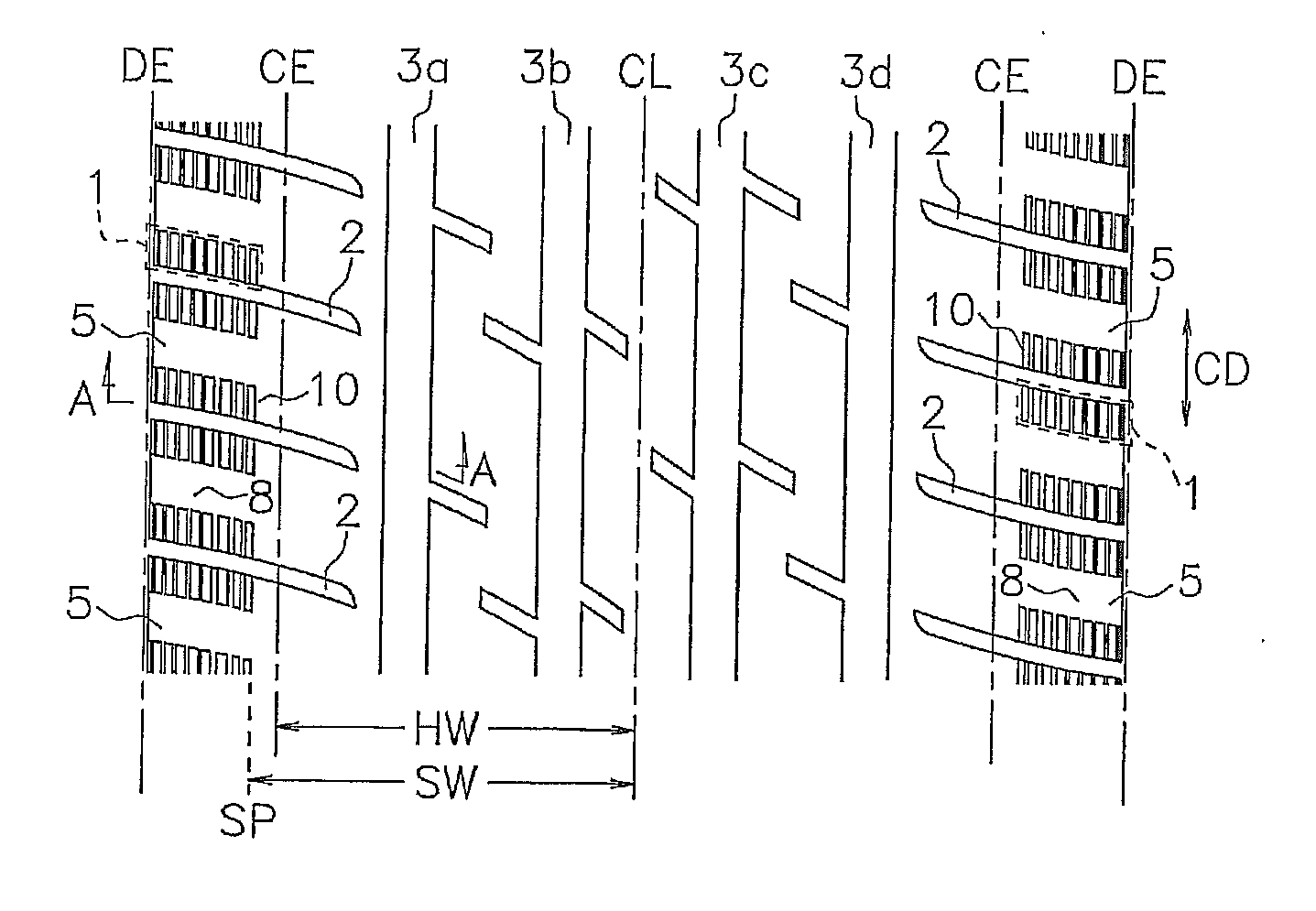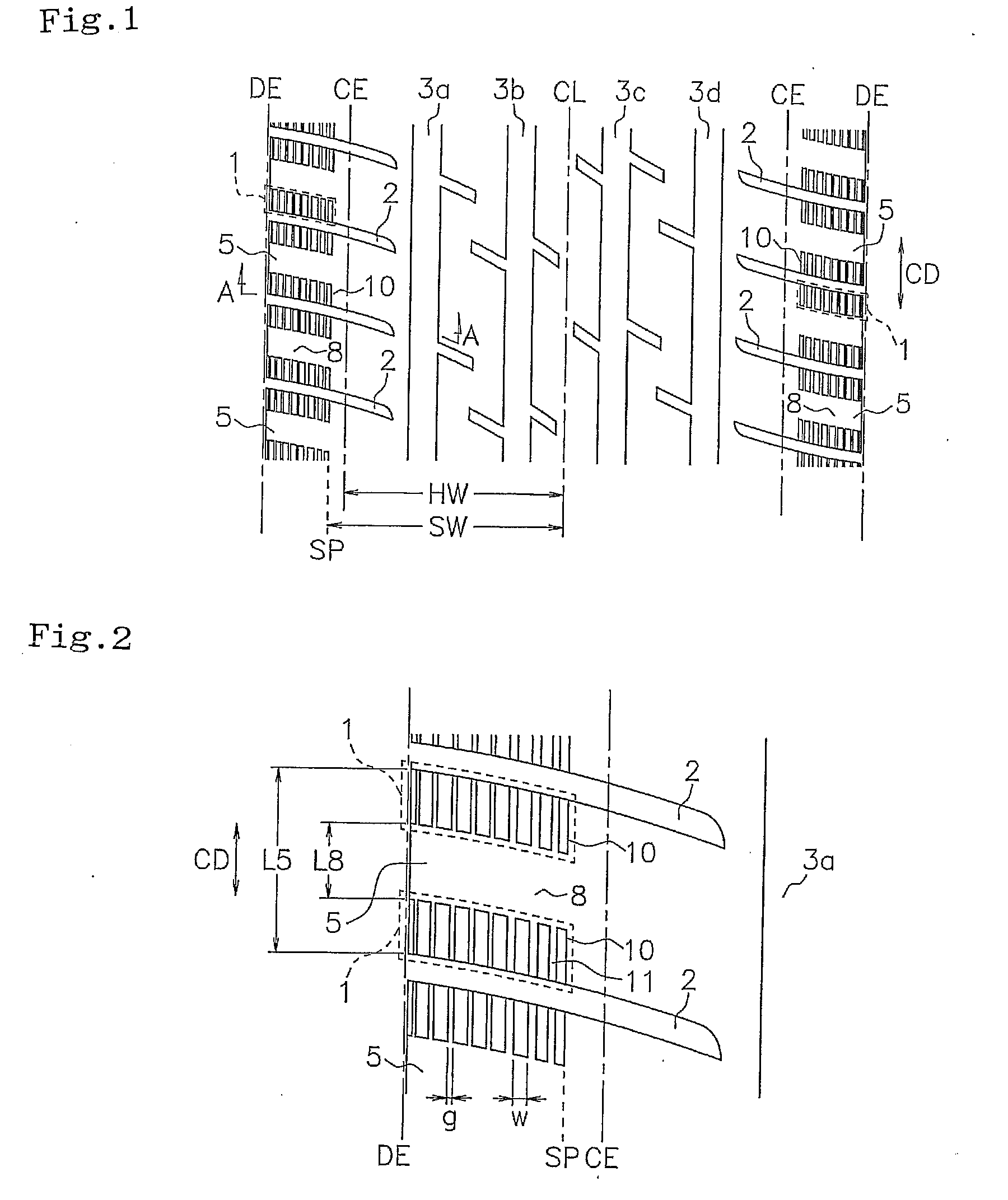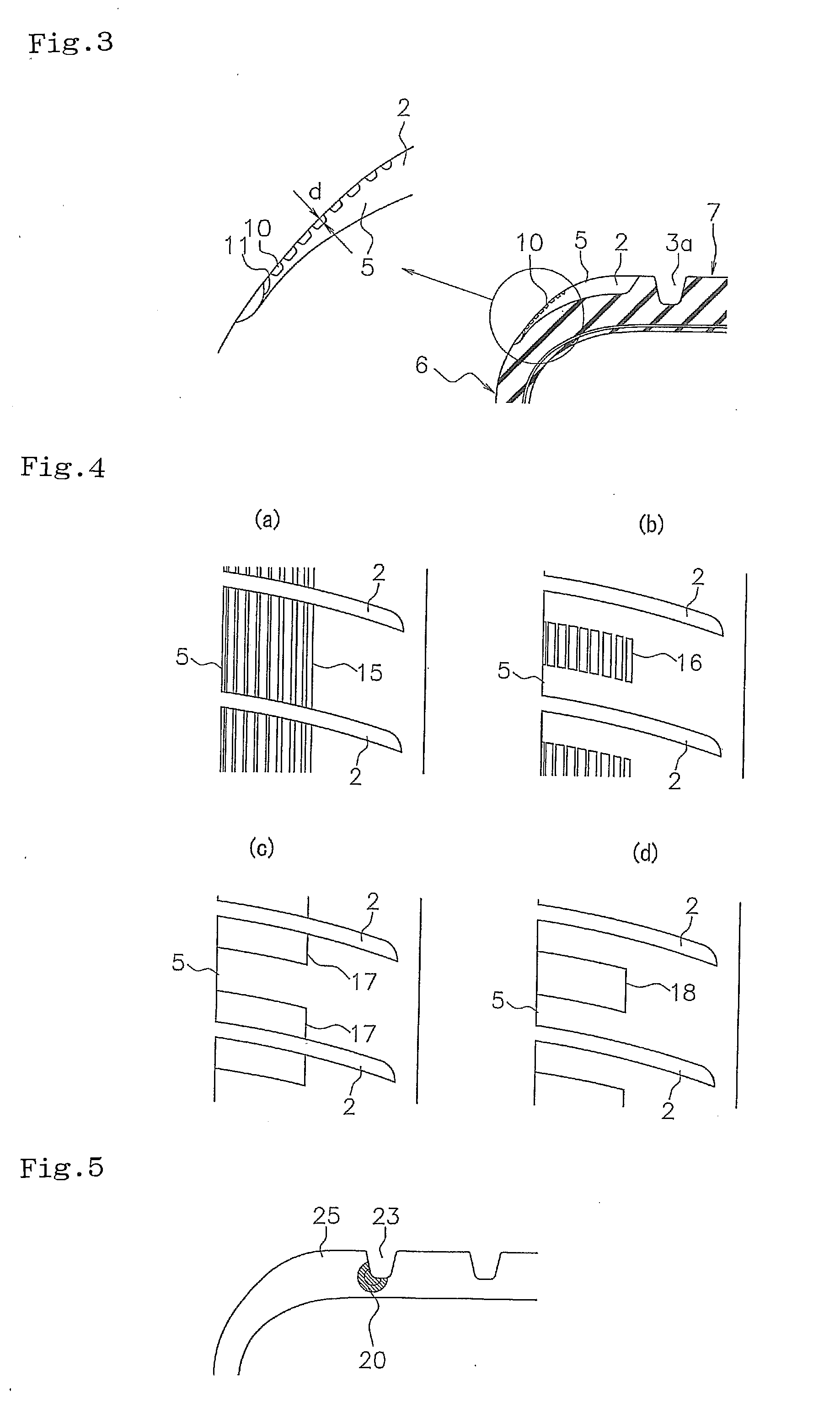Pneumatic tire
a pneumatic tire and tire body technology, applied in vehicle components, non-skid devices, rolling resistance optimization, etc., can solve the problems of deteriorating steering stability, achieve effective steering stability, suppress the effect of rigidity reduction, and reduce rolling resistan
- Summary
- Abstract
- Description
- Claims
- Application Information
AI Technical Summary
Benefits of technology
Problems solved by technology
Method used
Image
Examples
example
[0035]An example tire which concretely shows the structure and effect of the present invention will be explained. In a test tire provided for evaluating each of performances, a tire size is 195 / 65R15, a using rim is 6J, and a pneumatic pressure is 200 kPa. An evaluation of each of performances is executed as follows.
[0036](1) Rolling Resistance (Fuel Consumption Performance)
[0037]A rolling resistance was measured according to International Standard ISO28580 (JISD4234), and an inverse number thereof was calculated. An evaluation is carried out on by using an index number with a result of a comparative example 1 being set to 100, indicating that the larger the numerical value is, the smaller the rolling resistance and an excellent fuel consumption performance.
[0038](2) Steering Stability
[0039]The test tire was installed to an actual car (domestically built 2000 cc sedan vehicle) so as to travel on a dry road surface, and a feeling test was carried out by a driver. An evaluation is car...
PUM
 Login to View More
Login to View More Abstract
Description
Claims
Application Information
 Login to View More
Login to View More - R&D
- Intellectual Property
- Life Sciences
- Materials
- Tech Scout
- Unparalleled Data Quality
- Higher Quality Content
- 60% Fewer Hallucinations
Browse by: Latest US Patents, China's latest patents, Technical Efficacy Thesaurus, Application Domain, Technology Topic, Popular Technical Reports.
© 2025 PatSnap. All rights reserved.Legal|Privacy policy|Modern Slavery Act Transparency Statement|Sitemap|About US| Contact US: help@patsnap.com



